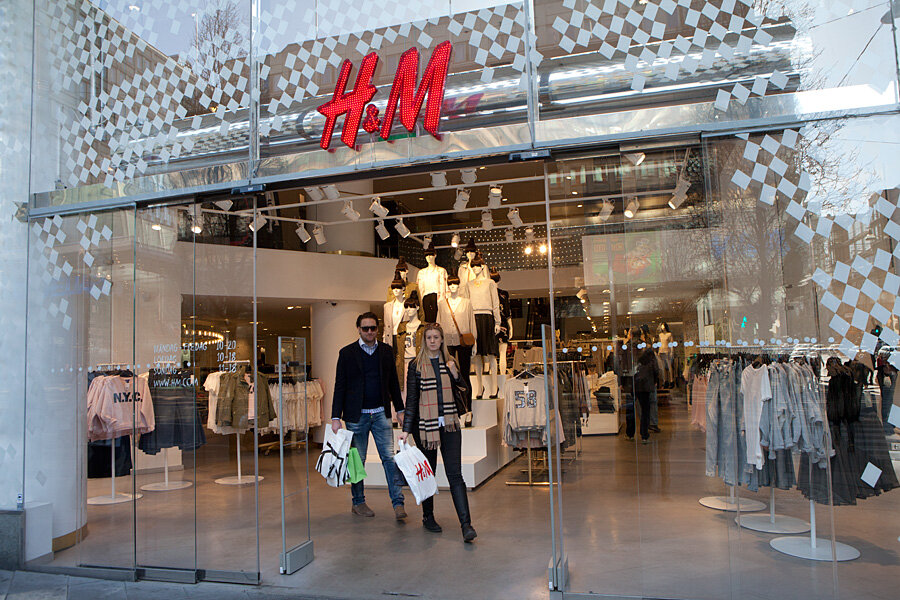H&M plans rapid growth in China amid questions on ethics of fast fashion
Loading...
Swedish retailer Hennes & Mautitz AB (H&M) has plans to open an additional 240 new stores this year, most of which will be opened in China.
Second only to the Spanish clothing retailer Zara in size, H&M has seen significant growth this year. Third-quarter sales grew 16 percent, surging to nearly 46 billion Swedish kronor, with revenue coming in at 39 billion kronor, reported Bloomberg Business.
The company has no plans to slow down. In the third quarter, H&M opened 36 new stores, but in the fourth quarter 240 new stores are scheduled to open, most of which will be in China and the US, according to the company’s website.
H&M already has 299 locations in China, but growth in the country’s apparel industry makes it a promising hotbed for retailers.
“The Asian clothing and apparel sector is expected to grow rapidly over the next five years. Annual average expenditure growth on clothing and footwear, at 9.5%, will comfortably outstrip that of any other region,” say PricewaterhouseCooper’s retail consultants in their 2015-2016 outlook report on the retail and consumer products sector in Asia.
China, in particular, will account for much of the expected growth, encompassing almost one-third of regional demand for clothing by 2018, say the consultants.
As such, H&M’s focus will be on China. “We have a positive long-term view on China, our position there is strong, as is our profitability,” Chief Executive Karl-Johan Persson told The Wall Street Journal.
Beyond its traditional flagship brand, H&M also owns premium brand Cos. The company hopes to introduce Cos in China as well, catering to the country’s growing upper-middle class.
H&M’s success comes amid a growing demand for fast fashion, a trend that Paula Rosenblum, Forbe’s retail analyst describes as “demanding a complete change in the apparel industry.”
“Unlike conventional clothing companies where designers plan their new lines every season, fast fashion retailers design, manufacture, and release new products ad hoc, whenever new trends appear,” explains a report on fast fashion funded by the Samsung Economic Research Institute.
Cheap prices and a continuous supply of new looks keep customers coming back to chains like H&M and Zara. And according to Ms. Rosenblum, “fast fashion isn’t going away any time soon.”
But despite fast fashion’s growth, chains including H&M are increasingly facing criticism over both environmental and social justice concerns.
“It is easy to forget, when browsing the racks at stores like Zara and Forever 21, that while the effect on your wallet is low, someone – or rather, something, is paying a much steeper price,” wrote Jamie Feldman, Style Associate Editor for the Huffington Post.
Though fast fashion offers consumers a wider variety of styles, the rising trend has also been tied to growing amounts of textiles in landfills. In the US alone, clothing, footware, and other non-durable textiles generated 12.4 million tons of landfill waste in 2013. Only about 15 percent, or 1.8 million tons of the textile waste was recovered for reprocessing or recycling, reported the US Environmental Protection Agency.
Furthermore, many fast fashion retailers rely on cheap labor to produce high quantities of their products. Many laborers used to come from China, but with rising wage demands, companies have looked to Taiwan, Indonesia, Vietnam, and Bangladesh, among other southeast Asian countries instead.
“The fashion industry is a 3 trillion dollar a year business and only two percent of apparel companies source from suppliers that pay their workers a fair and living wage,” says Shannon Whitehead, Founder of Factory45, an accelerator program that takes sustainable apparel companies from idea to launch.
While H&M is open about its suppliers, listing the addresses of all of the company’s manufacturing and processing factories online, they fail to disclose the wages they pay factory employees.
In 2013, H&M released proposals to institute pay structures aimed at offering a fair living wage by 2018 but the company has not yet offered a concrete explanation as to how they will accomplish this.
"If they want to pay living wages, they should pay living wages. They should give themselves a near-term deadline and give the world a number," said Scott Nova, executive director of the Worker Rights Consortium advocacy group in an interview with The Washington Post.
"Just staying 'we're for a living wage, in 5 years we're going to pay an undefined amount in a subset or our factories,' that's not credible," Mr. Nova criticized.







